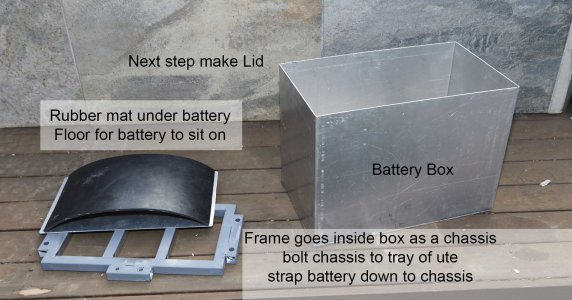- Joined
- Jun 7, 2016
- Messages
- 361
Well spent another day working on a custom battery box for my son's new ute.
Gave me a chance to clear the dust off the small pan brake. It worked really well for this job.
I opted to build a sort of chassis for the battery to be secured to, as the 2mm aluminium box has no strength to deal with a heavy battery.
Still got some more work to do on that with some tie down rods and wing nuts.
anyway there you have it.
Mal

Gave me a chance to clear the dust off the small pan brake. It worked really well for this job.
I opted to build a sort of chassis for the battery to be secured to, as the 2mm aluminium box has no strength to deal with a heavy battery.
Still got some more work to do on that with some tie down rods and wing nuts.
anyway there you have it.
Mal


